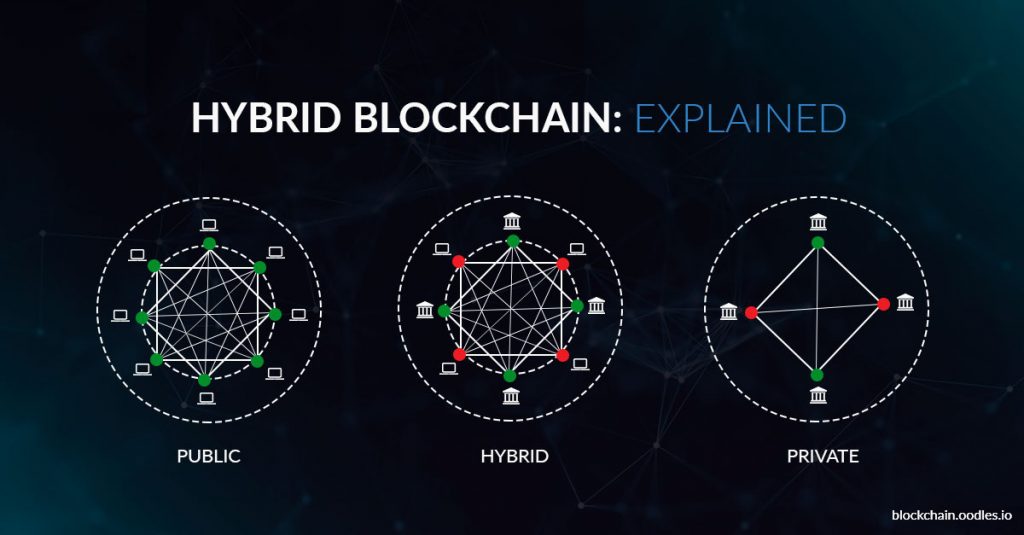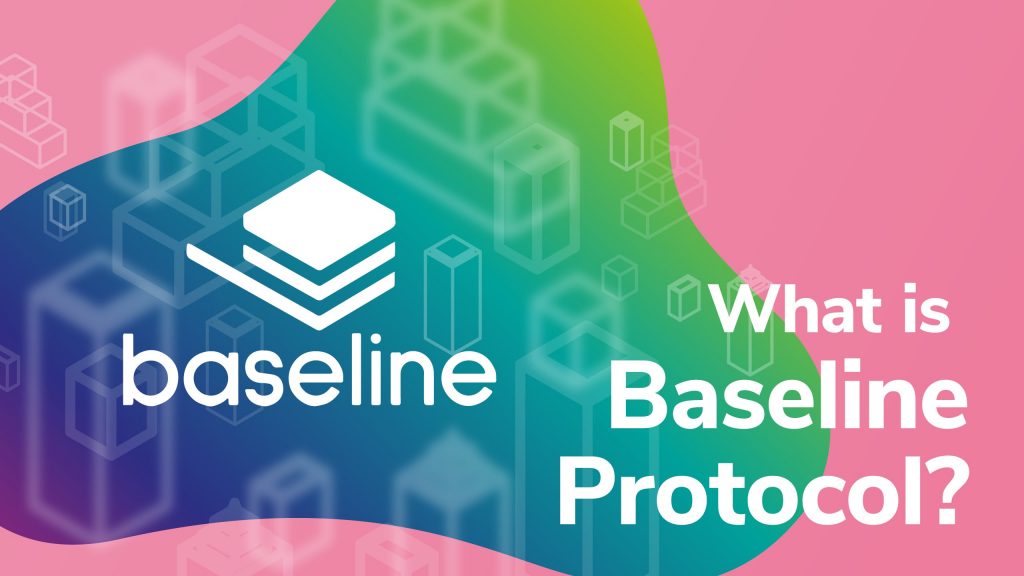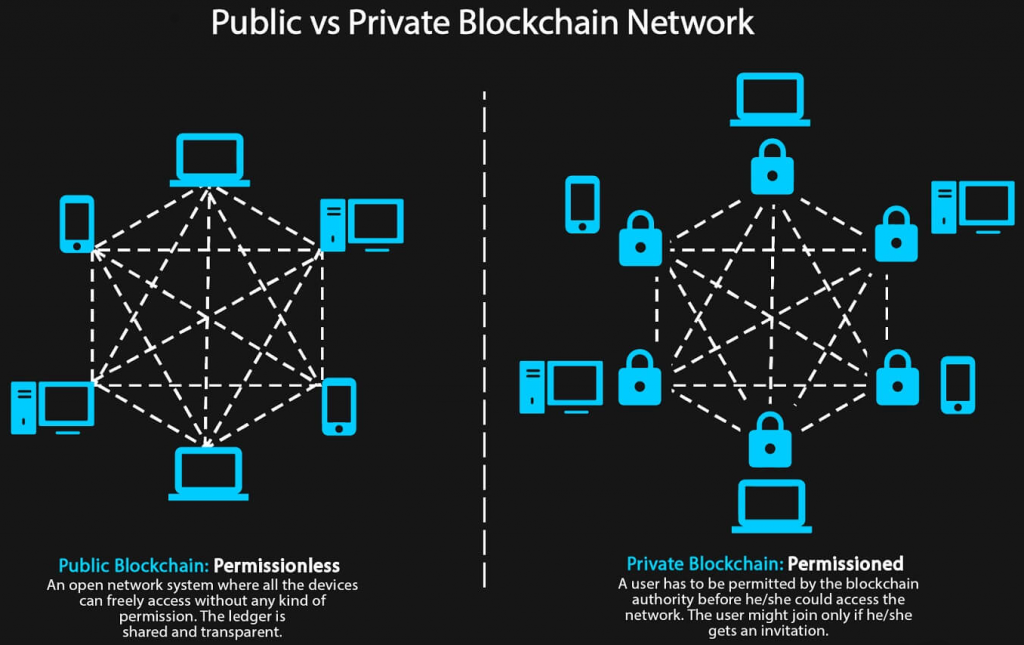
Blockchain technology, which was largely popularized by Bitcoin, became famous for using decentralized, transparent, censorship-resistant and immutable ledgers. After Bitcoin first came into the public consciousness, cryptocurrencies have become increasingly popular throughout the last decade. When most people think of blockchains, they usually think of public blockchains such as Bitcoin or Ethereum, but private blockchains are being implemented by all types of businesses, large and small. So, what is the discussion of public vs private blockchains all about?
In this article, we look at the key differences between public vs private blockchains and some of the exciting projects creating enterprise-ready solutions to implement blockchain infrastructure in a way that is scalable and can be tailored to the needs of individual businesses. Depending on the desired use case, both private and public blockchains have their own advantages.
Nevertheless, taking a look at public and private blockchains is just scratching the surface of the blockchain field. If you feel this article leaves you wanting for more, check out Ivan on Tech Academy! Ivan on Tech Academy is one of the most well-known blockchain education platforms available anywhere in the world, and offers countless blockchain courses with in-depth knowledge. What are you waiting for?
What are Public Blockchains?
Blockchains are, at their very core, simply systems of code that store all transaction data of every transaction that has occurred on the chain. Blockchain technology uses maths and science to cryptographically secure, and link, each transaction to one another in the chain; thus, blockchain technology is generally deemed “unhackable”.

Public blockchains are blockchains that can show all historic transactions when searched for or requested through a block explorer, by anyone, anywhere, using the internet. Public chains show a ledger of all transactions and give users the ability to trade, interact, and participate on the blockchain without any permissions needed.
Why Do We Need Public Blockchains?
Transparency
Transparency is what makes public blockchains so different from traditional financial institutions. Using a block explorer such as Etherscan, anyone can follow any transaction from any Ethereum wallet address. Bitcoin has a capped supply of 21 million BTC, and this cannot be debased. Any bad actors operating on public blockchains can be traced, as can exchange inflows for crypto assets.
Public blockchains like Bitcoin and Ethereum do not require users to provide personal information like a name and address, but public wallet addresses can be tracked on the blockchain, which can be followed back throughout history to extrapolate the origin of transactions. When it comes to public vs private blockchains, you can’t hide transactions on public blockchains – with the exception of privacy coins and mixing pools.
Censorship Resistance
Though it is theoretically possible to take down the entire cryptocurrency ecosystem, practically it would take a massive coordinated global effort to wipe out the entire Bitcoin network. All it would take is for a single node operator to remain for the network to survive.

Governments can ban cryptocurrency trading within their jurisdiction, but crypto is largely censorship-resistant. For a person escaping from a failing economy that wishes to take any wealth with them, gold, or foreign currency could easily be confiscated. Bitcoin can be stored in the brain, all you need to do is memorize your seed phrase and you can access your wealth on the blockchain from anywhere in the world with an internet connection.
Decentralized
The fact that the Bitcoin public blockchain is decentralized is, perhaps, one of its key value propositions. The network is so large and robust that it makes attacking it very difficult. Most importantly though, there is no central point of control or a single entity that controls the Bitcoin network, making it highly decentralized and resistant to manipulation.

Immutable
Immutability is what makes public blockchains tamper-proof. This is one of the key concepts that define public blockchain transactions and helps to protect against attacks on the network.
For example, when a Bitcoin transaction is added to the blockchain, you cannot change any part of that transaction, it is permanent and cannot be manipulated to show different values within a transaction.
Examples
Bitcoin Blockchain
The Bitcoin blockchain was first created in 2009 by the pseudonymous developer(s) Satoshi Nakamoto, the original pioneer of blockchain technology. However, the only function the Bitcoin blockchain is designed to perform is to send money from wallet A to wallet B. More than a decade later, the Lightning Network went live as a second layer scaling solution for faster transactions on top of the Bitcoin chain.

Ethereum Network
The Ethereum Network went live in 2015 following the Whitepaper proposal from Vitalik Buterin in 2013. Buterin recognized the short-comings of the Bitcoin blockchain, as fantastic as the technology may be. Buterin and his team developed a landscape to create and deploy smart contracts and decentralized applications.

This too was a pioneering move in the space, with many more smart contract-friendly blockchains being developed since, including NEO, which is often referred to as the Chinese equivalent of Ethereum.
What are Private Blockchains?
Distributed Ledger Technology (DLT) is the term used to refer to a consensus of digital records of transactions that are geographically distributed across several parties. As opposed to siloed databases, DLT has no central point of authority or failure.
DLT is not strictly blockchain technology, as it doesn’t involve stacking transactions in blocks to a chain. Data is stored as historic facts (snapshots) of the ledger, and these facts are combined together and stored in a vault. If you’re interested in learning more, make sure to check out our Distributed Ledger Technology Deep Dive article. Conveniently, the combination of DLT and blockchain can create private blockchain solutions.

Most enterprises and institutions require a great deal of privacy from a blockchain solution. The potential for DLT could spread to military and governmental solutions, which of course would demand the utmost privacy and security for sensitive data to be stored, or communicated with by any new system implementation.
Deciding who gets access to certain data is crucial for most large organizations, and can be difficult to keep track of. Private blockchain solutions allow for permissioned access to be granted through certificates, using cryptographically verified identity. Public blockchains may concern some businesses due to a lack of regulations, whereas private blockchains offer better regulatory compliance.
Why Do We Need Private Blockchains?
Public blockchains are undoubtedly one of the greatest innovations in modern history, but the transparent nature of public blockchains poses a hurdle for enterprise adoption. The blockchain industry is pushing to cater to every need for enterprises and big businesses, but why is that?
The 3 P’s are the essential components that are required for enterprise-ready private blockchain solutions:
Privacy
Private blockchains require a different set of regulations to public blockchains to allow higher levels of privacy for companies.

Zero-Knowledge Proofs (ZKP) is a solution that allows two or more parties to know a certain value to be true, without knowing what the value is. ZKPs allow some computations to be made on a public blockchain, without revealing sensitive data to the parties involved when it could be detrimental to do so.
Performance
The blockchain network will need to be strong enough to cope with large numbers of transactions without congesting the network or causing disruption to the consumer experience. To have robust, high volume transactions, off-chain computations are crucial to avoiding network congestion. Only specific transaction data must be performed on-chain, so by taking non-essential or less-sensitive data off-chain, the likelihood of network congestion is heavily reduced as less computational power is required to validate transactions.
A private blockchain must also be scalable, with the capacity for increasingly high volume transactions. Scaling solutions are essential to crypto right now. As the community eagerly anticipates the roll-out of Ethereum 2.0, several innovative scaling solutions have emerged throughout the crypto industry for all manner of functions to avoid network congestion.
Permission
For many businesses and high profile institutions, the permission of data is of paramount importance. Deciding who gets access to a wealth of information can be a tough thing to keep on top of. Private blockchain solutions allow verifiably secured, permissioned access to multiple data points, which can be monitored by all parties involved.
Permissioned groups make it easy for companies to grant access to relevant data to the relevant people in a traceable way and allows permissions to be observed and adjusted in real-time.
Examples
Hyperledger
Hyperledger’s main goal is to maintain trust, transparency, and accountability between business partners. It’s also used as software that can provide a personalized blockchain service with predefined roles and rules. Another goal is to achieve permissioned and private transactions with the use of channels.
R3 Corda
Established by R3 in 2014, Corda is a DLT network that allows each node to have its own identity. A network operator grants certificates for permissioning and all nodes must be identified with these certificates to join a specific network.

The Corda Ledger utilizes on-ledger and off-ledger facts. Facts are a snapshot of the ledger taken by each node, as opposed to a “full” node that we might see on public blockchains, who usually have a full copy of the ledger which is updated in real-time.
The Corda Ledger also uses states, which are immutable ledger facts, for example, an order or a loan. When a fact changes, i.e. when the loan is repaid or the order is received, the state is then marked as historic, signaling completion of the transaction. The Corda network also offers a network map service, allowing participants to search for nodes by name, IP address, or the services they offer.
Quorum
Quorum is a soft fork of the Ethereum blockchain, founded by JP Morgan and recently acquired by Brooklyn-based Ethereum Venture firm ConsenSys. The Quorum blockchain is open source and offers various privacy-centric features for enterprises.

Quorum utilizes the Quorum Chain voting-based consensus mechanism which delegates voting rights by use of smart contracts. This type of voting works with a majority vote and does not require 100% of votes for transactions to be processed.
Public and Private Blockchain Hybrid Solutions
The third option is to combine the two and create a hybrid blockchain business solution. Instead of opposing public vs private blockchains, we can instead choose to have the luxuries of both.

It’s worth bearing in mind that a private blockchain operating with a single or few nodes, is much more vulnerable to a 51% attack than a public blockchain with thousands of nodes, making it possible to potentially edit the audit log. You can create a private permissioned blockchain for a neutral trust-worthy network combining the best of both private and public blockchains.
For example, the German Ministry of Health is now using a combination of both the private Hyperledger and public Ethereum blockchains for their internal processing and transactions. The solution was proposed by Unibright, who has since gone on to develop a very similar protocol that is being adopted by some of the largest corporations on the planet, including Microsoft and IBM.
Baseline Protocol
Released in March 2020, the Baseline Protocol was co-created by the Unibright team. Baseline Protocol ultimately combines the Zero Knowledge Proof features from Zcash, with the public Ethereum blockchain, creating opportunities for companies to start working with Ethereum and making the Ethereum blockchain more suited for enterprise use.

Founders of the protocol include AMD, Chainlink, ConsenSys, Ernest & Young, Maker DAO, and Microsoft among others, and is governed by the Ethereum Oasis Project (EOP). Baseline Protocol is a middleware that works between the Ethereum blockchain and businesses’ own internal IT systems.
For private blockchains to be enterprise-ready, they must possess some key features if businesses are to implement them. With Baseline, companies can pick and choose parts of the blockchain and Baseline Protocol services that are most suited to their business needs.
Baseline Protocol is currently working with several major companies, including Coca-Cola, who’s bottling plant utilizes the Ethereum public blockchain for supply chain management.
Unibright is helping corporations switch from trusting people with transactions to trusting computers or nodes, this technological transformation is resolving the common concerns of a business not wanting to change their internal systems of records, or not having employees who can write code. Unibright Connects (part of the Unibright framework) allow businesses to connect their off-chain systems to the blockchain with ease, including creating standards, so each new client doesn’t have to start at the beginning.
Unibright recognized that the best enterprise blockchain will feature the base code of Ethereum, and combining adaptable features for concerns around the 3 P’s has created the Baseline Protocol to be the go-to platform for blockchain business integration solutions. If you want to learn more about Baseline protocol, there’s a course available for that Ivan on Tech Academy, along with countless other blockchain courses!
Public vs Private Blockchains: Which One Is Right For You?
When deciding to build applications on a blockchain, it’s important to consider each use case individually when choosing between using public vs private blockchains. The main thing to consider is identity: who will be able to read, write, and participate on the blockchain? Are they invited or anonymous?

When considering public vs private blockchains, remember they are not competing; they are used for very different functions and can also be used together. Public blockchains are more useful for business-to-consumer models, certificates, cryptocurrency, and DeFi. Private blockchains are often preferred for supply-chain management, military, or government records.
Public blockchains are permissionless, decentralized, and censorship-resistant. Private blockchains are not fully decentralized, as there is an organizing party who can choose participants who read and write on the chain. The critical advantage for private blockchains and DLTs is cryptographic verification of identity.
Public vs Private Blockchains Conclusion
Innovation and interoperability are rife in blockchain right now. The range of new services and applications that have emerged in the past year alone is staggering, as is the speed at which blockchain has been adopted by enterprises and businesses across the world.
The problems posed by public blockchains to businesses are being solved by solutions that allow companies to pick and choose the parts they want from both public and private blockchains, with tailored solutions to help any business implement blockchain into existing IT systems.
Internal IT systems are often inefficient and outdated. Hybrid blockchain solutions such as Unibright and Baseline Protocol make it easy for businesses to transition to modern IT and data management systems without starting from scratch.
Both public and private blockchains have their uses, but the ability to pick and choose elements from each to create a bespoke, hybrid, enterprise-ready blockchain solution that meets the specific needs of every sector is going to change the way businesses operate forever.
There is an element of tribalism in the blockchain community about public vs private blockchains, but the truth is that together, the two are likely to propel us into a new economic paradigm by allowing the legacy systems used by businesses to integrate with and update to the latest blockchain-based systems.
As such, public and private blockchains are both integral parts of the blockchain ecosystem, and understanding both is a crucial part of understanding wide-ranging blockchain technology use cases. If you want to learn more about blockchains, enroll in Ivan on Tech Academy today and get an exclusive 20% discount, when using the BLOG20 promo code. Join the blockchain revolution today!





